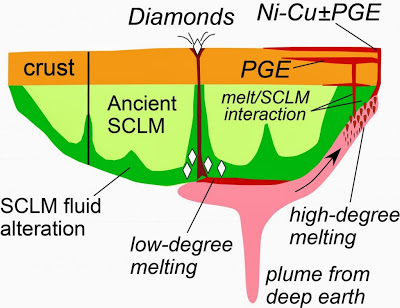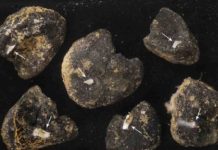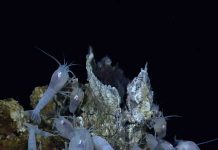
As published this month in Nature Geoscience, researchers and industry partners have produced the first major ‘cat scan of the earth’. Their work reveals a new chart of the sub-continental lithosphere mantle and its potential mineral hotspots, visible only through a set of newly integrated technologies.
“You hear the term ‘the next frontier’ dropped frequently in the world of research,” says Distinguished Professor Sue O’Reilly, Director of the ARC Centre of Excellence for Core to Crust Fluid Systems, “but to understand what’s happening below the earth is inherently more difficult to study than something like space exploration, or the human body – so it really is a new field, evolving with our technology.
“Using geochemical and geophysical technologies to explore layers of the earth, our research has for the first time mapped two-thirds of the world’s sub-continental lithosphere mantle, and analysed the chemical composition below – revealing potential mineral hotspots 100-200km under the surface.”
Traditionally, ore deposits have been discovered through surface prospecting, but as most surface-facing sites have now been identified, mineral exploration companies are seeking new insight as to where the earth’s magma plumes might deliver their rich mineral endowment next.
The Core to Crust team show how basic scientific research can work hand in hand with key industries to deliver new insight into the earth’s architecture and evolution. The technological mix developed by the team has already had an impact on Australia’s mineral exploration industry, changing exploration strategies for a significant part of the industry by providing this new predictive framework for a range of economic deposits.
“Our earliest understandings of the lithosphere suggested that it was a smooth, consistent layer of the earth’s upper mantle, says O’Reilly. “Modern geophysical imaging shows otherwise – and we suggest that it is, in fact, a layer with many irregularities – and it’s in these sites that potential new mineral sources are lying in wait.”
To identify a new source, the team’s predictive framework analyses the chemical composition of the upper mantle in a location, to judge its metal endowment potential, the architecture of the lithosphere in that location and the geological precedents of similar areas.
“Pulling together information from international datasets of the last decade, including over 40,000 new geochemical analyses from the Macquarie laboratories, the study has revealed amazing secrets about the way the world works, how it has evolved, and now, a new predictive model for minerals exploration. We see the deep earth beneath the surface in four dimensions: height, width, depth, and time,” said O’Reilly.
“This is a textbook illustration of synergy between pure and strategic research – the work has revealed new fundamental information about the origin of the uppermost 200km shell of the Earth over 3.5 billion years, and is has provided the exploration industry with a new framework for global-scale exploration targeting.”
Note : The above story is based on materials provided by Macquarie University








